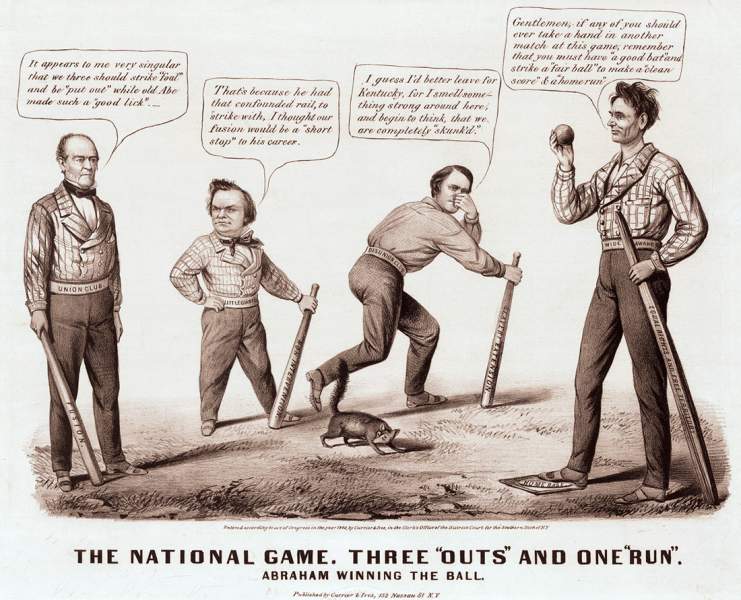Scanned by
Library of Congress
Notes
Sized, cropped, and adjusted for use here by John Osborne, Dickinson College, May 18, 2008.
Image type
cartoon
Courtesy of
Library of Congress Prints and Photographs Division
Original caption
The national game. Three "outs" and one "run"
Source citation
Currier and Ives Collection, Library of Congress
Source note
Probable artist - Louis Maurer
The German artist, Louis Maurer, drew upon an American sport—baseball—for this pro-Lincoln political cartoon, which Currier & Ives published in September 1860, only two months before the presidential election of 1860. Maurer created a parody of the four main presidential candidates (from left to right): Constitutional Union Party candidate John Bell, Northern Democratic Party candidate Stephen A. Douglas, Southern Democratic Party candidate John C. Breckinridge, and Republican Party candidate Abraham Lincoln. Lincoln, who stands on the home plate, reminds his opponents that they need a “good bat” to hit a home run. Each baseball player’s bat represents the platform they are running on. The artist suggests that Lincoln’s bat of “equal rights and free territory” is more powerful than Breckinridge’s Southern “slavery extension” bat, Douglas’ pro-states’ rights bat of “non intervention” or Bell’s bat “fusion,” which the cartoon of Douglas refers to as a strategy to defeat Lincoln. All of the candidates also wear belts that either reflect a personal or party characteristic. For example, Douglas’ belt reads “Little Giant,” a nickname that became popular during the 1858 Lincoln-Douglas debates for Illinois senator. On the other hand, Lincoln’s “Wide Awake Club” belt eludes to the group of young, Republican men of the same name who marched in Northern cities to gain support for Lincoln. In the end, Breckinridge admits defeat, holding his nose as he moves away from the skunk in the foreground. At the time, “skunk’d” was used as a baseball term to describe a shutout or a large margin of victory. (By Rebecca Solnit)
For more information, visit Blog Divided.

